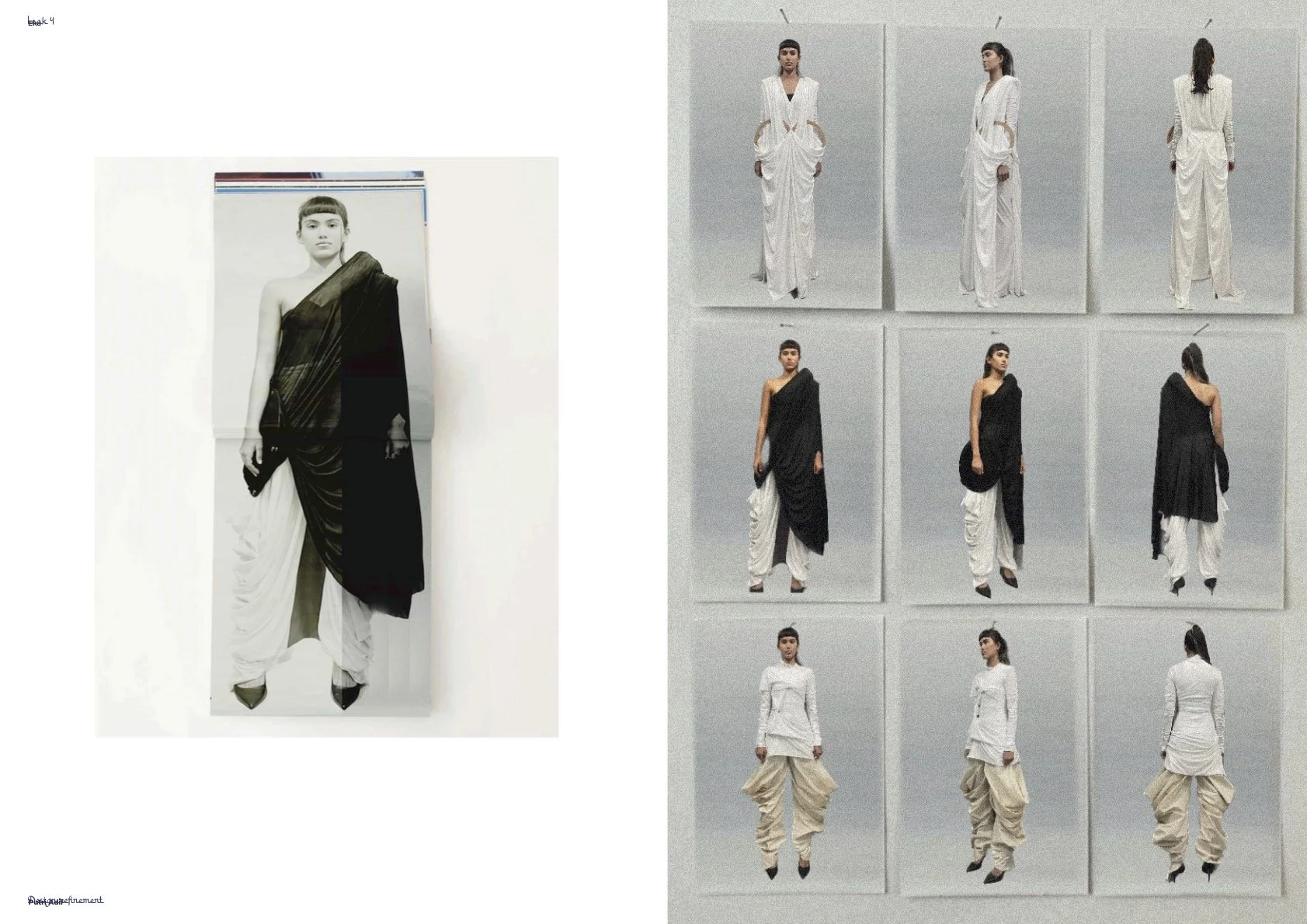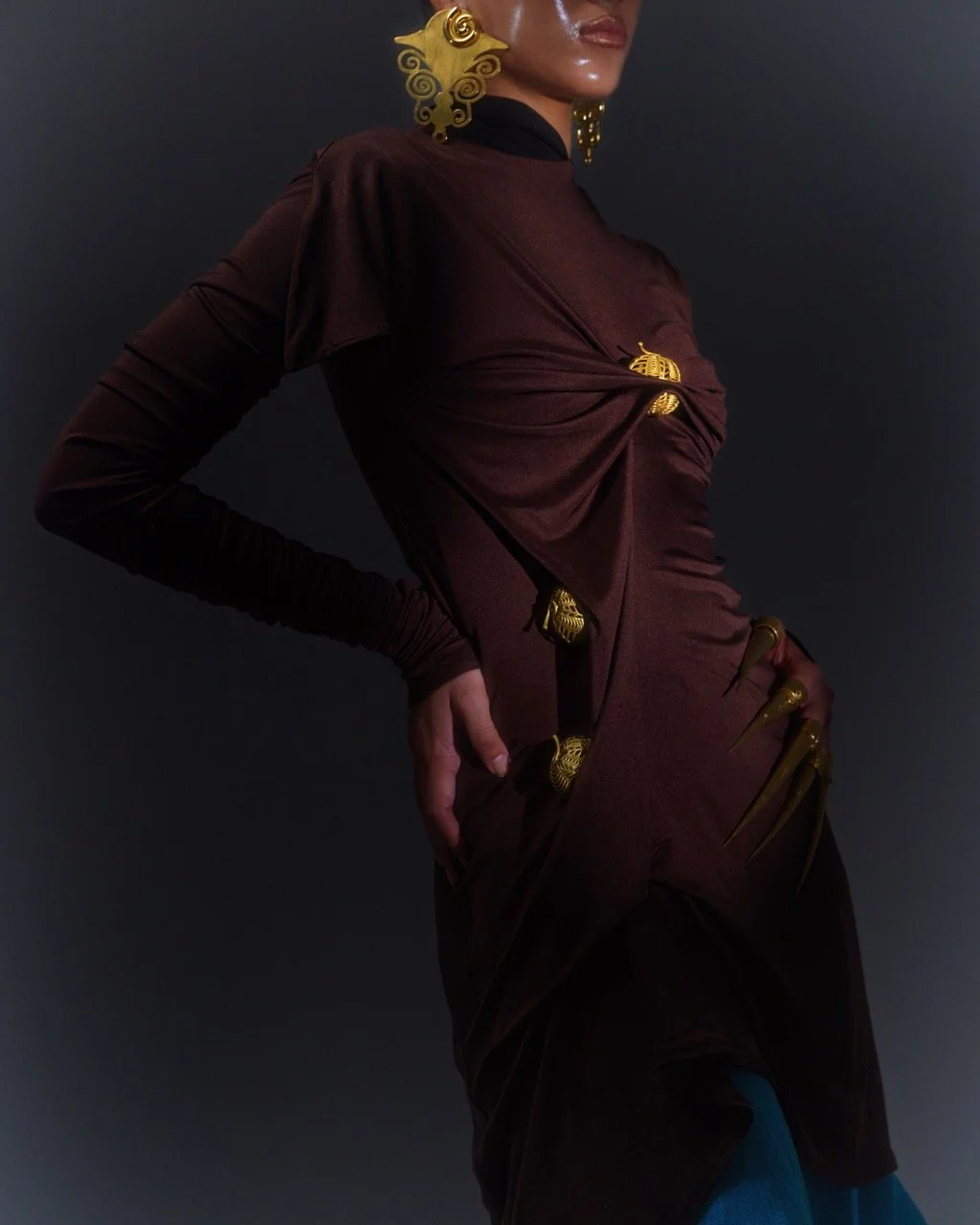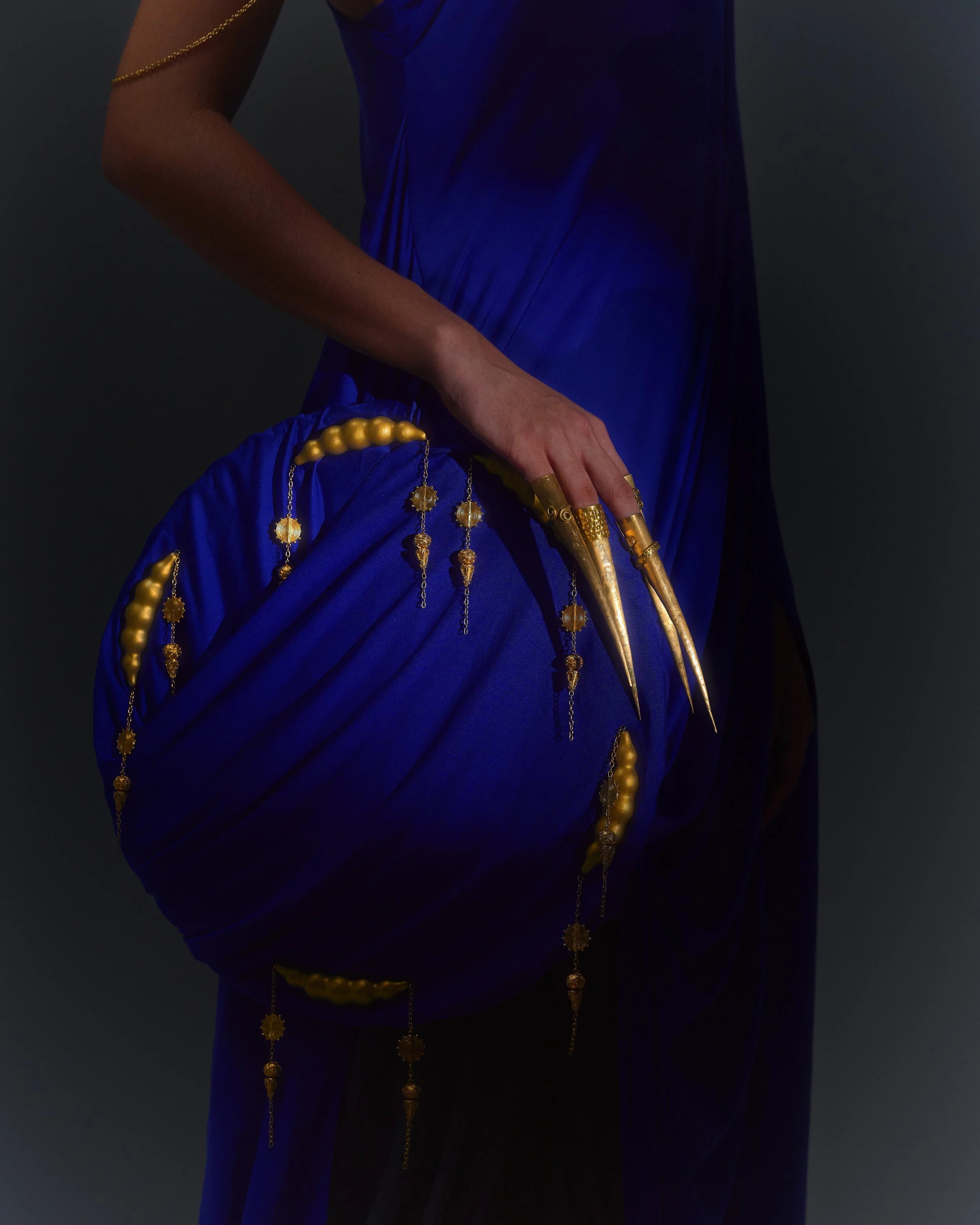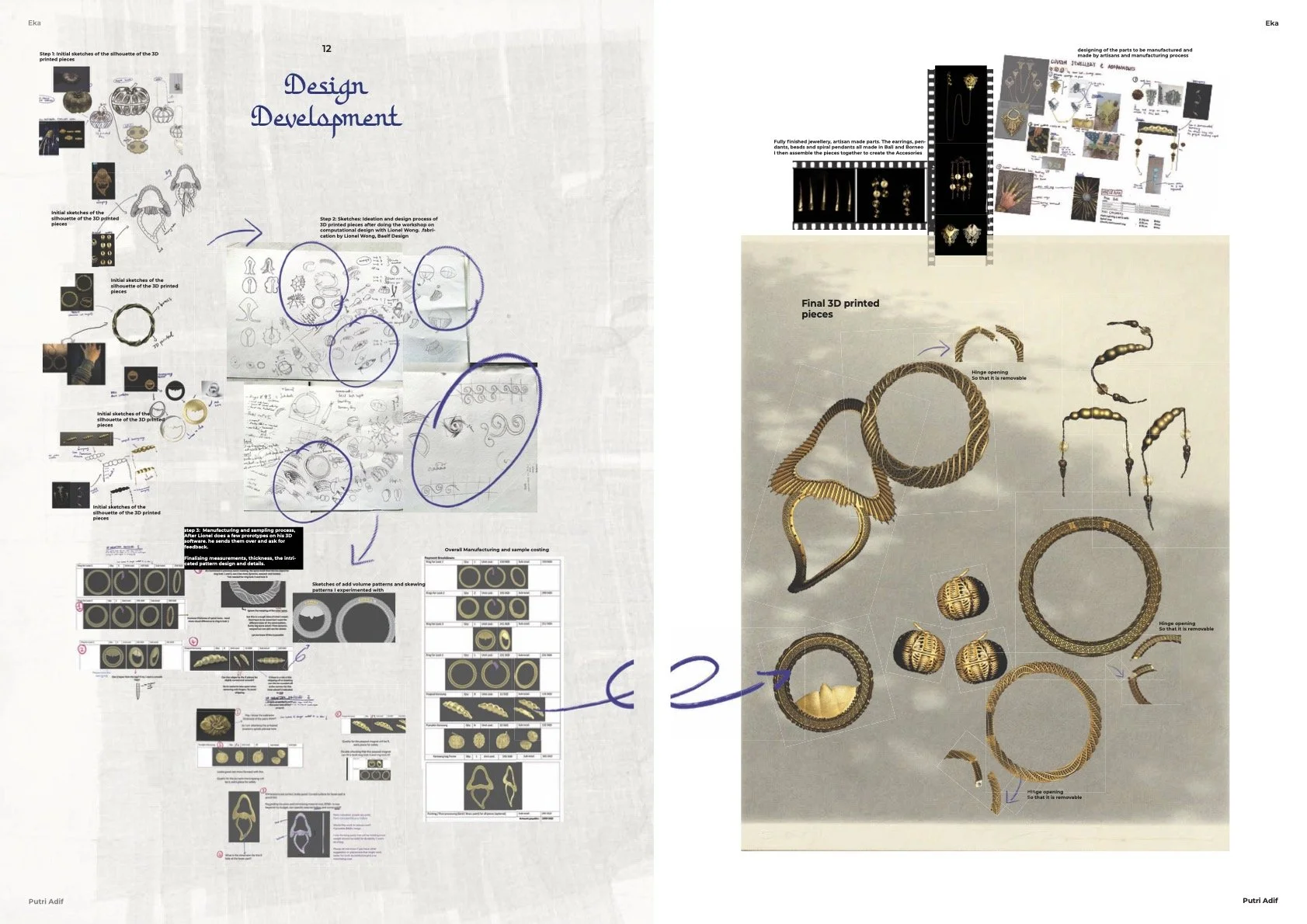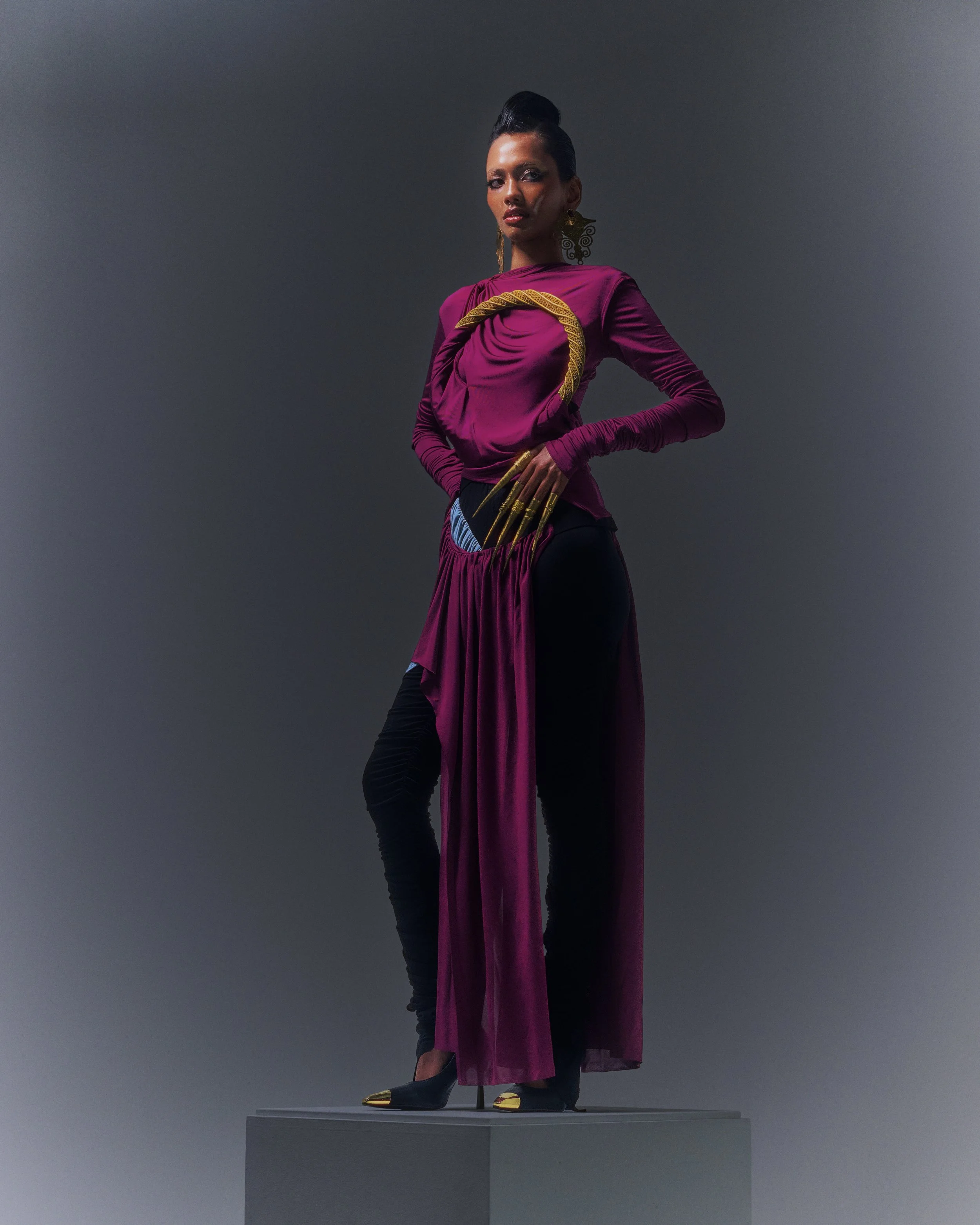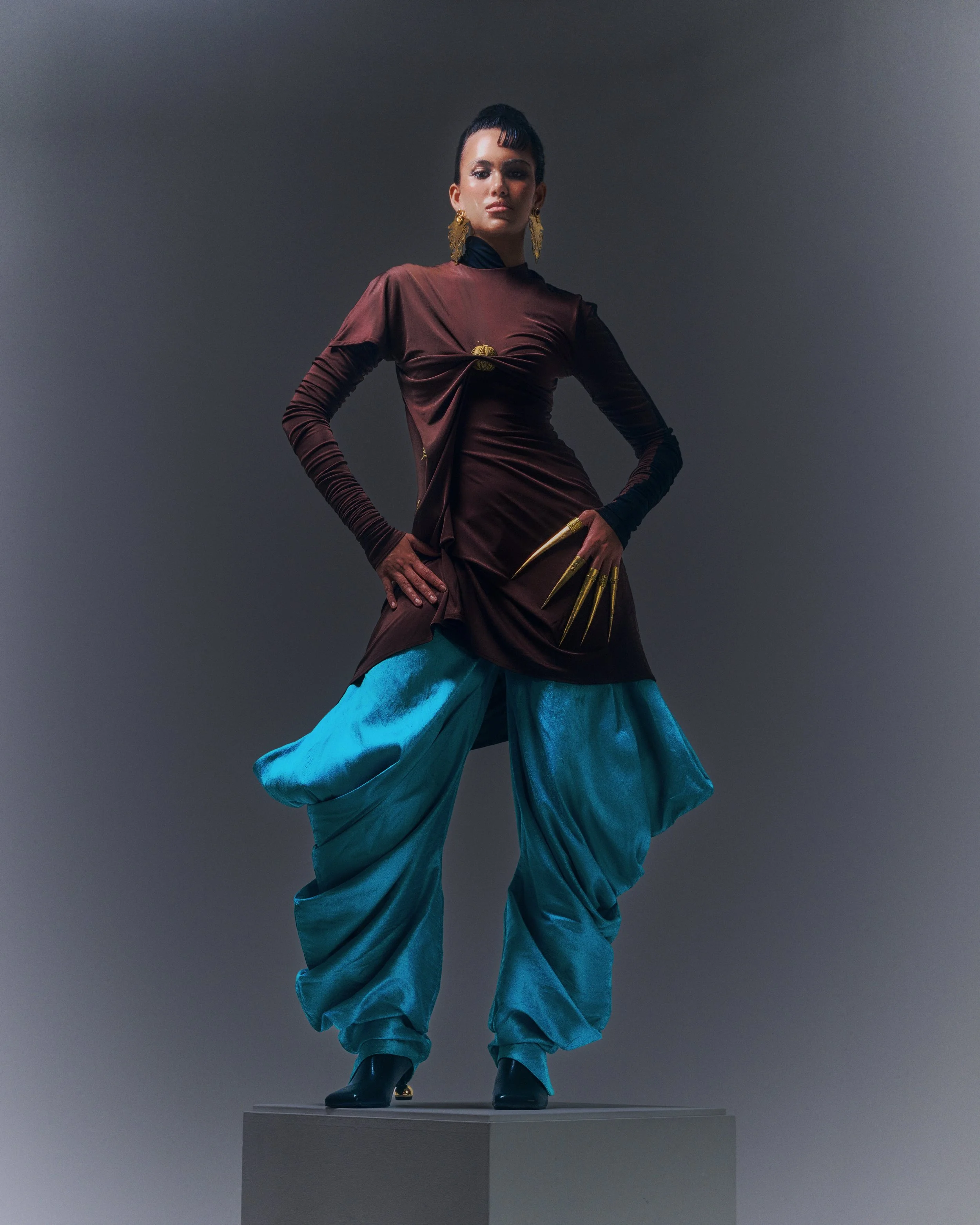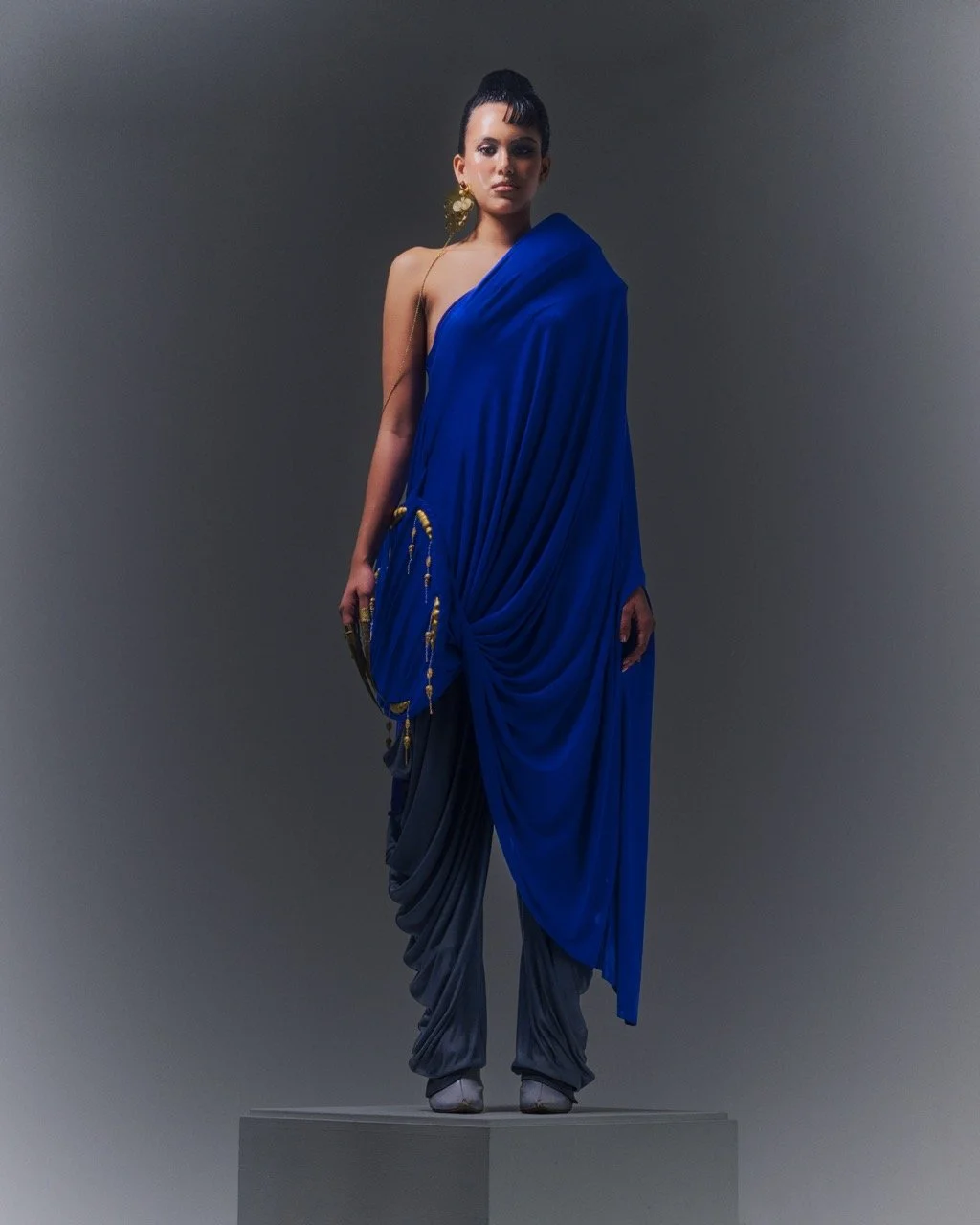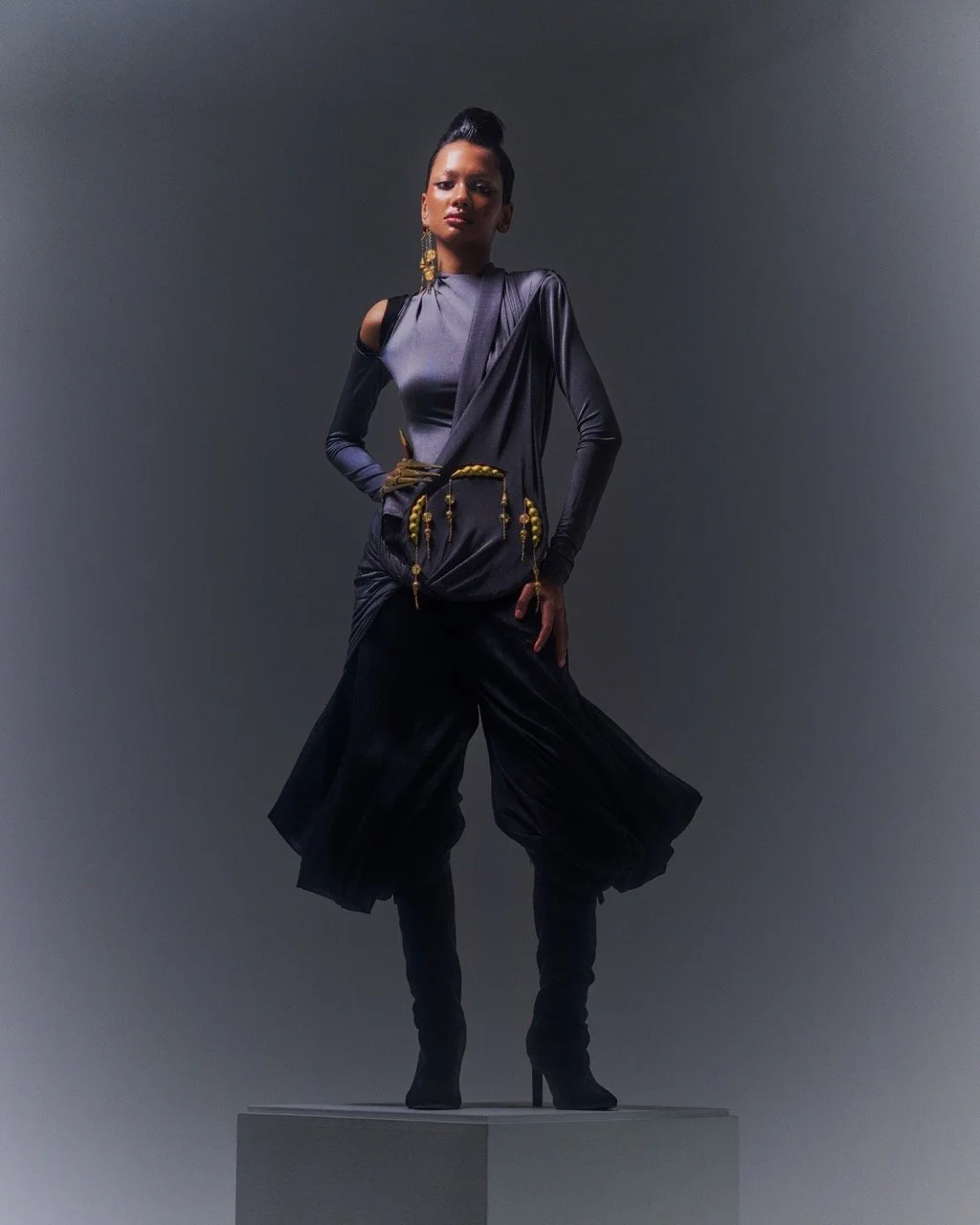’Eka’ by Putri Adif
Reconfiguring Javanese cultural dress
Putri Adif is a Singaporean fashion designer and stylist who started her fashion journey in Nanyang Academy of Fine Arts, pursuing a Diploma in Fashion Design. Her designs have been featured in myriad platforms, including the #SGFASHIONNOW exhibition at Asian Civilisations Museum in 2022, Vogue Singapore, as well as ‘Why Not?’—a defunct collective of fresh graduates who staged their own independent runway show in 2019. Fresh out of the BA (Hons) Fashion Design & Textiles programme at LASALLE College of the Arts, University of the Arts Singapore, she invites us into the world of her evocative graduate collection, ‘Eka’, which she presented at the graduate fashion show, ‘Rewoven Ties’, in May.
‘Eka’ Collection. Photo by Jaya Khidir. Image courtesy of Putri Adif.
Culture and heritage are recurring themes in Adif’s work. However, they were not necessarily what she had in mind when she first began brainstorming at the start of her third year. She did not have any ideas at first—only the mounting pressure of knowing this would be the last collection that was truly her own.
Adif’s corset in Vogue Singapore. Photo by Ethan Lai. Image courtesy of Putri Adif.
She turned inward for inspiration. Questions about her identity began to rise to the surface. They included how it felt to be a Javanese woman in a metropolitan country like Singapore, and how this shaped her perception of her own culture and heritage. “I remember being a teenager and always wishing I was not who I am,” she laments. That thought stayed with her, prompting her to question why she felt that way. In this quiet, honest introspection, she began to peel back the layers of Western ideals imposed on her. Slowly, ideas for the collection began to emerge, like puzzle pieces falling into place, eventually coming together to form ‘Eka’.
Eka, which means “one” in Javanese continues her exploration of culture and heritage through a contemporary lens, blending traditional craftsmanship with technology like 3D printing. She delved into the history of the kebaya for her research, using it as the framework in how explores the garments within her collection. “I was researching a lot about the evolution of kebayas, how much it has changed and where it came from,” explains Putri.
Adif’s creative process journal. Image courtesy of Putri Adif.
Within the six-look collection that is mostly crafted in silk jersey, she experiments with the length and fit of the kebaya, challenging its modest roots by cinching the silhouette through slinky drapes and incorporating cut-outs by the arms and chest. One look directly references the kebaya: a long tunic dress in light blue and brown, a favourite colour pairing for Adif, with a front shawl collar that holds two suspended round golden kerongsangs or brooches by the hip. These brooches are peppered throughout the collection and styled in unexpected ways to accentuate various looks.
The idea of incorporating objects into her looks was present since the very start. Inspired by similar concepts she had seen while browsing other graduate collections from international fashion schools, she was eager to experiment with this approach herself by using traditional Javanese heirloom jewels. However, bringing it to life required a skill set she did not have.
‘Eka’ details. Photos by Jaya Khidir. Images courtesy of Putri Adif.
As someone accustomed to working alone, learning to ask for help was one of her challenges. It was not until she attended Iris van Herpen: Sculpting the Senses, an exhibition at the ArtScience Museum that her mindset shifted. Adif was inspired when van Herpen shared that she was not a “tech person”, even though her work is intertwined with technology. Instead, van Herpen collaborates with those who are more experienced, and credits them generously. That was the encouragement Adif needed to reach out for assistance.
She teamed up with multiple artists and makers to create the jewellery pieces. Baëlf Design handled the 3D printing, while Bali Sekar Pramata and Jess Boubie handcrafted smaller pieces like nail rings, earrings, and chains in brass. Throughout the process, careful thought was given to the 3D elements, which were made from nylon and resin, to ensure they felt balanced and proportionate on the body. Hinges and magnets were added to the kerongsang, allowing the wearer to have various styling options. “I love jewellery, so I wanted to put it in the collection and I wanted it to hold most of the traditional part of the collection,”Adif says. She drew inspiration from her own grandmother’s heirlooms and then exaggerated them in scale and form.
Adif’s creative process journal. Image courtesy of Putri Adif.
The colour palette, while punchy, took some time to perfect. She dedicated hours to exploring different combinations on her iPad, using a colour-scheme book as a guide. “I made it a point to explore colour because I feel like I had not before,” she explains. Her previous Diploma collection, ‘Red Thread’, had been much more limited in its colour story. This time, she was driven to put together the combinations that best represented her.
‘Eka’ Collection. Photos by Jaya Khidir. Images courtesy of Putri Adif.
Choosing to focus on themes of culture and heritage was something that initially left her feeling both anxious and uncertain. She was wary about toeing the fine line of respecting the garments, yet still challenging its place and boundaries of what it could become. Amid the whirlwind of creating, she also reflected on fashion’s role in today’s society, finding deeper meaning in how her work could contribute to preserving traditional crafts and garments for future generations.
All in all, ‘Eka’ is a collection that explores the complexities of being a Javanese woman in today’s society. Building on the foundation laid in ‘Red Thread’, she delves deeper into her cultural roots and reimagines traditional dress through the lens of modern technology. The result is a narrative that speaks to the current zeitgeist—a reconfiguration of what cultural dress means today, where it transcends cultural occasions and seamlessly blends into the everyday wardrobe.
About the writer
Sadiq Shah is a fashion writer and stylist who enjoys exploring the tensions of the in-between. He is a storyteller who strives to create work that fosters genuine connections and reveals layers of emotions and meaning.



